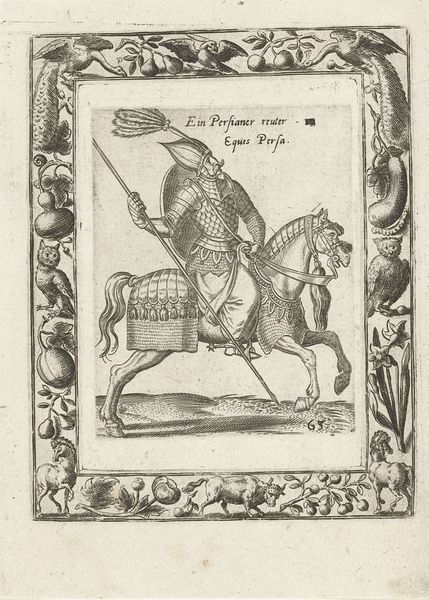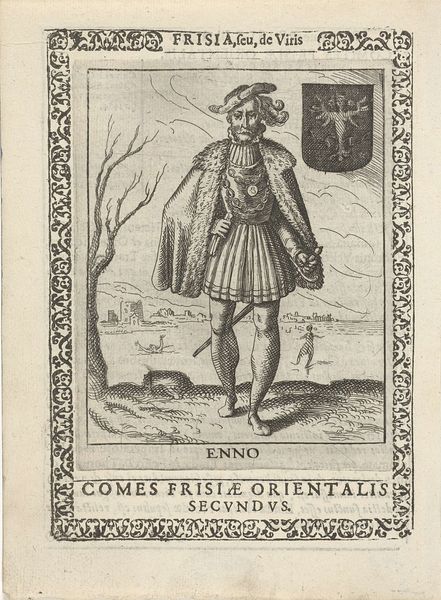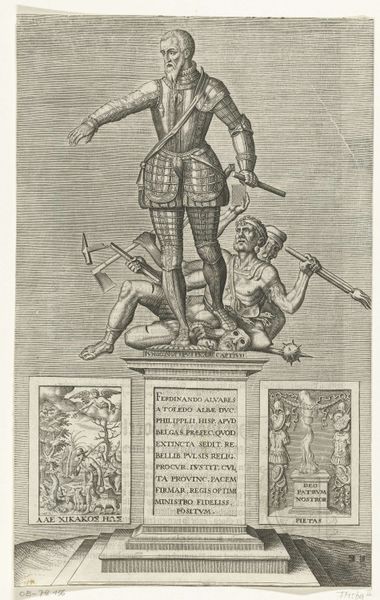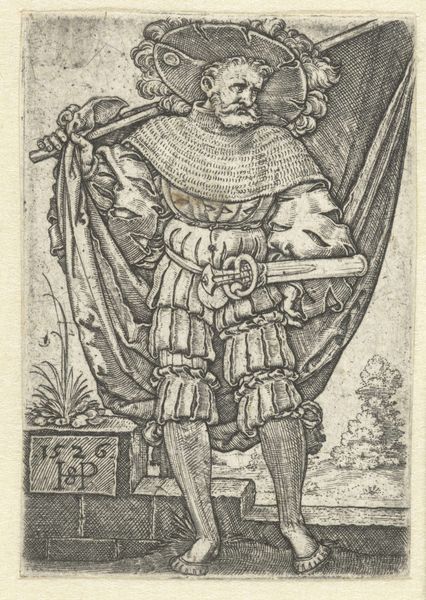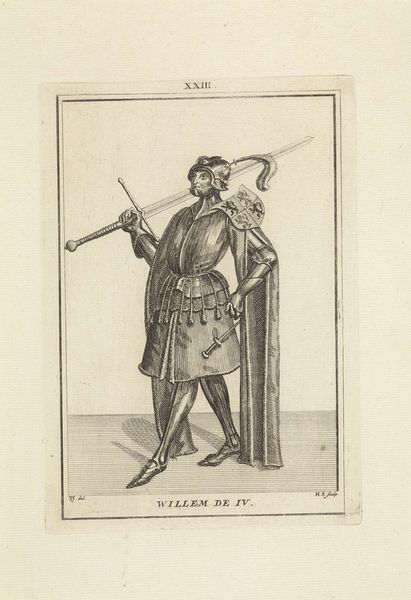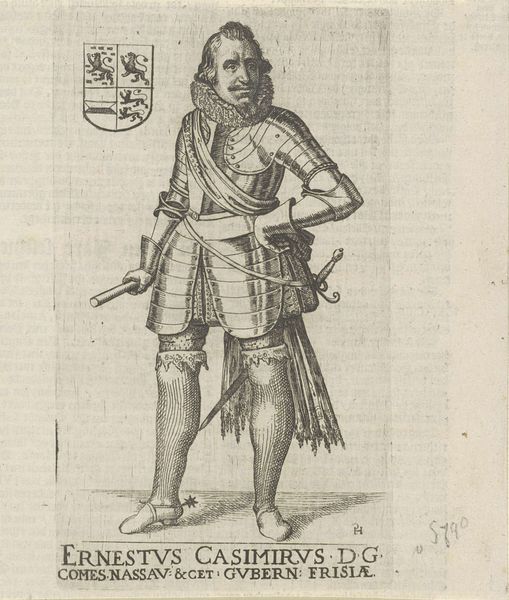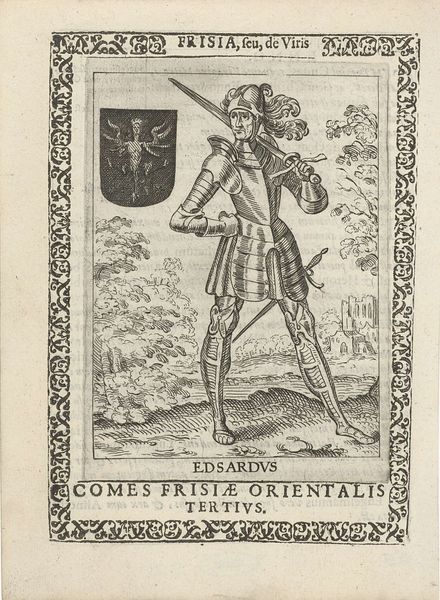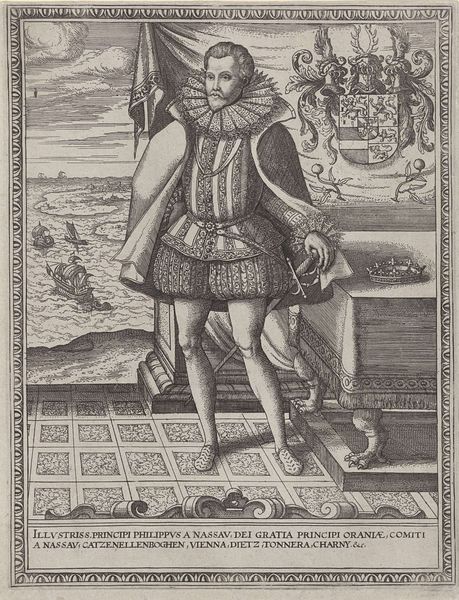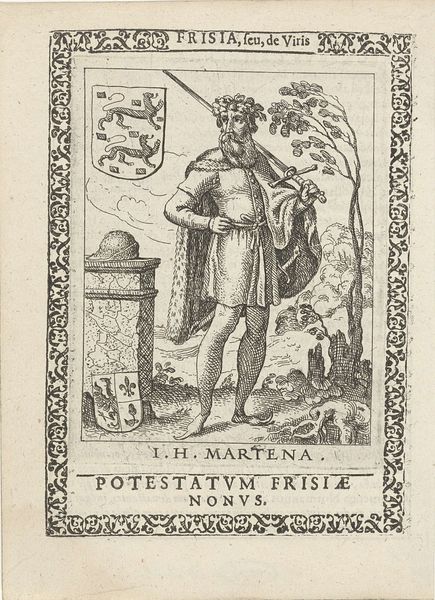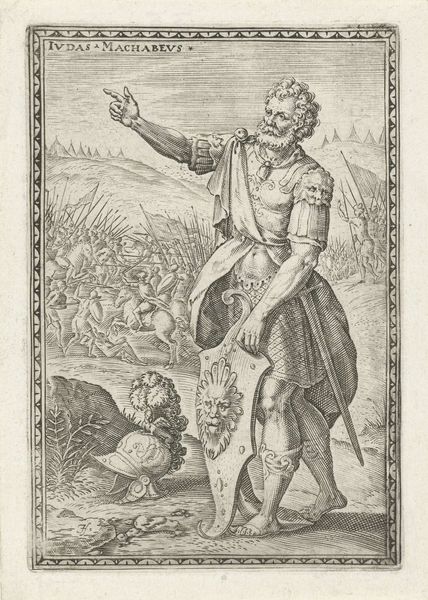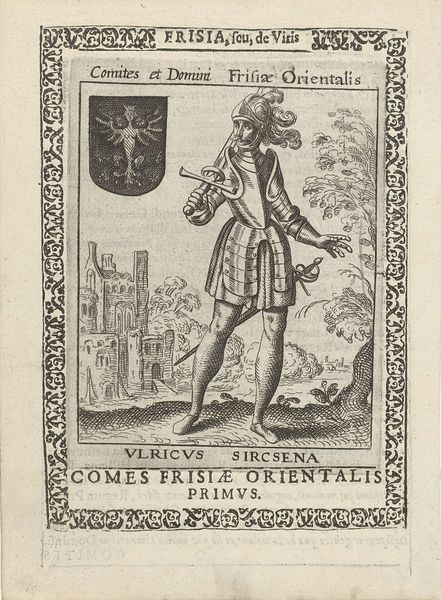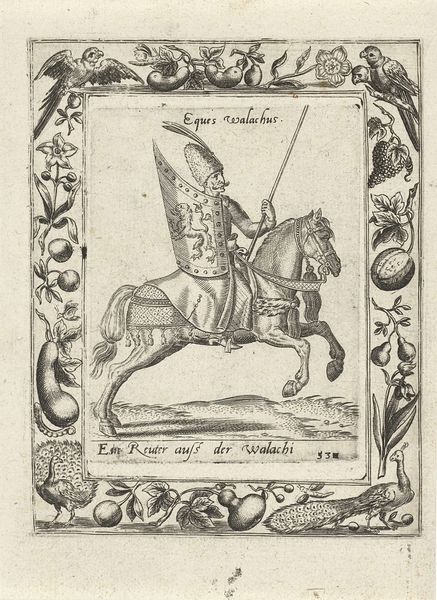
print, engraving
#
portrait
# print
#
11_renaissance
#
history-painting
#
northern-renaissance
#
engraving
Dimensions: height 125 mm, width 100 mm, height 158 mm, width 115 mm
Copyright: Rijks Museum: Open Domain
This print of King Phillip II was made by Pieter Feddes van Harlingen, sometime in the 17th century. As an engraving, it relies on the relatively repeatable process of incising lines into a metal plate, inking the surface, and then pressing paper against it. But think about the skill this required. The engraver isn’t just making a likeness of the king, but also creating a matrix from which many images can be made. The material qualities of the metal—its hardness and the way it takes ink—enable this process. The lines are not just descriptive; they have a graphic life of their own, building up the image from a constellation of marks. Feddes van Harlingen wasn’t just reproducing an image. He was working with the grain of the printing process itself, using its inherent logic to make something new. It’s a reminder that even in the age of mechanical reproduction, craft and artistry are inseparable.
Comments
No comments
Be the first to comment and join the conversation on the ultimate creative platform.
